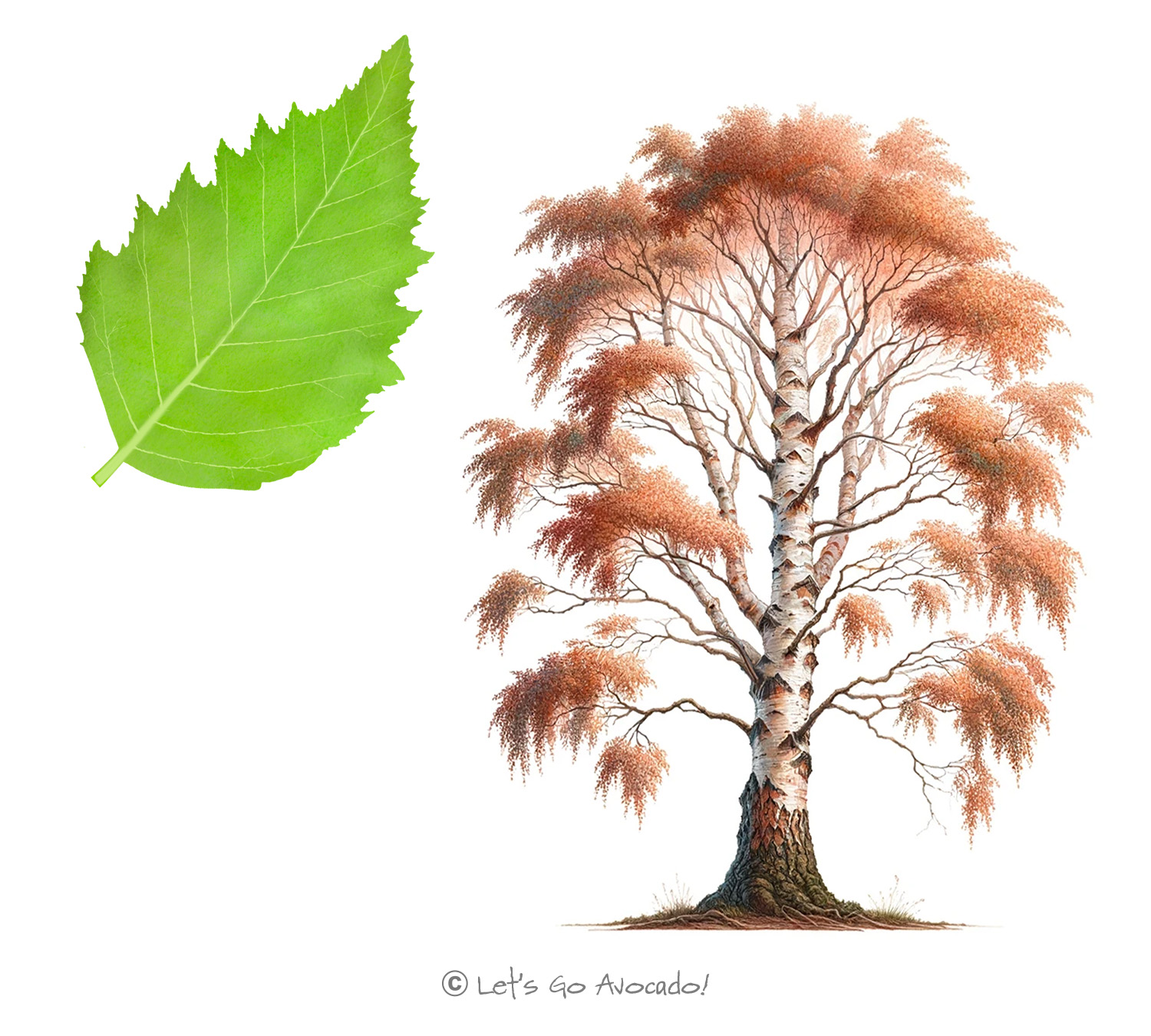The River Birch Tree: A Streamside Spectacle
Get ready for a splash of fun with the River Birch tree, or Betula nigra! This tree loves to hang out by rivers and streams, making it a super important part of our watery landscapes. Native to the eastern United States, the River Birch is not just any tree – it’s a water-loving wonder with some really neat features that help it survive and thrive along our waterways.
What’s Cool About the River Birch?
One of the coolest things about the River Birch is its bark. It peels off in papery layers, showing off colors like cinnamon, cream, and even a little orange. It’s like the tree is doing a magic trick, constantly changing its look! The leaves are diamond-shaped and dance in the breeze, and in the spring, the tree grows long catkins (those are like tassels) that look pretty neat.
How Big Does This Tree Get?
The River Birch can grow pretty tall, usually about 40-70 feet. That’s as tall as a six-story building! It has a nice spread too, which means its branches stretch out wide to create lots of shade. Perfect for cooling off on a hot day by the river!
From Little Seed to Big Tree
In spring, the River Birch gets busy making flowers, and then seeds that look like tiny pine cones. When they fall into the water, they float away to grow into new trees somewhere else. This tree doesn’t mind getting its feet wet and grows best in places that are a bit soggy, like near rivers and streams.
Why Are River Birches Important?
River Birches are super important for keeping riverbanks from washing away. Their roots grab onto the soil and help keep everything in place, especially when the water gets fast and splashy. Plus, they’re like hotels for wildlife, giving homes to birds and bugs.
Is This Tree Tough?
Yes, it is! The River Birch is tough enough to handle soggy soil and doesn’t get bothered too much by bugs or diseases. It’s a strong tree that can handle some pretty tricky places to live.
Do People Like the River Birch?
People love the River Birch for its unique look and because it’s so good at growing by the water. It’s great for making our riverbanks look pretty and keeping them safe at the same time. Plus, it’s just a fun tree to have around with all its peeling bark and fluttery leaves.
The River Birch is a fantastic tree that does a lot for our rivers and streams. It’s not just about looking good (which it does with its peeling bark), but it’s also about helping nature and providing a home for all sorts of critters. So next time you’re near a river, see if you can spot a River Birch. It’s the one that looks like it’s showing off with its cool, peeling bark and keeping the riverbanks safe and sound.
Every tree has something special about it, just like the River Birch with its amazing bark and love for water. Keep exploring, and you’ll find out how every tree, big or small, wet or dry, has its own awesome story to tell!










